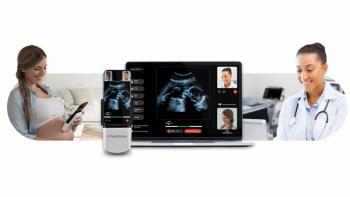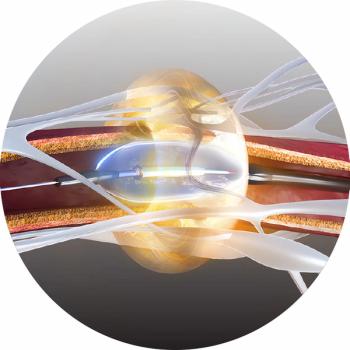
Survey shows variation in performance of thyroid aspirations
Most radiologists surveyed by the Society for Radiologists in Ultrasound said they perform more than 10 thyroid aspirations each week. But few used consistent criteria to determine which nodules were chosen for aspiration. Institutions performing more thyroid aspirations seem to find more malignant nodules, but the survey didn’t determine if this was a result of better methodology or simply a matter of patient selection.
Most radiologists surveyed by the Society for Radiologists in Ultrasound said they perform more than 10 thyroid aspirations each week. But few used consistent criteria to determine which nodules were chosen for aspiration. Institutions performing more thyroid aspirations seem to find more malignant nodules, but the survey didn't determine if this was a result of better methodology or simply a matter of patient selection.
Dr. Roberta diFlorio-Alexander, a radiologist at Dartmouth-Hitchcock Medical Center in New Hampshire, presented results of the survey distributed by the SRU to its fellows at the 2006 RSNA meeting. Radiologists answered questions about volume of thyroid procedures, criteria used for choosing which thyroid nodules would be aspirated, procedural methods such as needle size preference, and incidence of cytopathology.
Roughly half of the 46 respondents said they routinely biopsied multiple thyroid nodules on each patient. Ultrasound is unable to diagnose malignancy, but certain characteristics are considered suspicious, and these criteria are used in deciding which nodules to biopsy. The size of a nodule, for instance, can be determined with ultrasound, and this is a common criterion, but size has never been shown to be an indication of cytopathology. Microcalcifications were another common criterion used, along with other sonographic features unusual for thyroid tissue.
Slightly more than half of the biopsies using these criteria found cytopathology present in slightly more than half the nodules aspirated. Twenty-five percent of the rest had nondiagnostic results. Malignancy rates in thyroid aspirates ranged between 5% and 20%.
Variations in criteria used may account for some of the variability in results. A consensus statement published by the SRU in 2005 attempted to standardize the criteria. Among the consensus panel's conclusions:
- Nodule size is not predictive of malignancy, because the likelihood of cancer in a thyroid nodule has been shown to be the same regardless of the size measured at ultrasound.
- These recommendations apply to nodules 1 cm in size or larger because of the uncertainty as to whether diagnosis of smaller cancers improves life expectancy, as well as concern that inclusion of smaller nodules would lead to an excessive number of biopsies.
- For solitary nodules with microcalcifications, strongly consider ultrasound-guided fine-needle aspiration if the nodule is larger than 1 cm.
- For solitary nodules with coarse calcifications or those showing up as almost or entirely solid, strongly consider ultrasound-guided fine-needle aspiration if the nodule is larger than 1.5 cm.
- For solitary mixed solid and cystic or almost entirely cystic nodules with solid mural component, consider ultrasound-guided fine-needle aspiration if the nodule is larger than 2 cm.
- For solitary nodules showing substantial growth since prior ultrasound examination but none of the above characteristics, consider ultrasound-guided fine-needle aspiration.
- For solitary nodules that are almost entirely cystic and show none of the above characteristics, including substantial growth, ultrasound-guided fine-needle aspiration is probably unnecessary.
- If there are multiple nodules, consider ultrasound-guided fine-needle aspiration of one or more nodules, with selection prioritized on the basis of criteria listed above, in order.
- The presence of abnormal lymph nodes overrides the ultrasound features criteria and should prompt biopsy of the lymph node and/or (if necessary) of an ipsilateral thyroid nodule.
Specific recommendations appear in
The recommendations allow physicians some flexibility in the selection of which nodules require fine-needle aspiration. The decision to perform or defer ultrasound-guided fine-needle aspiration for a particular thyroid nodule in a given patient should be made by the physician according to the individual circumstances.
Newsletter
Stay at the forefront of radiology with the Diagnostic Imaging newsletter, delivering the latest news, clinical insights, and imaging advancements for today’s radiologists.






























